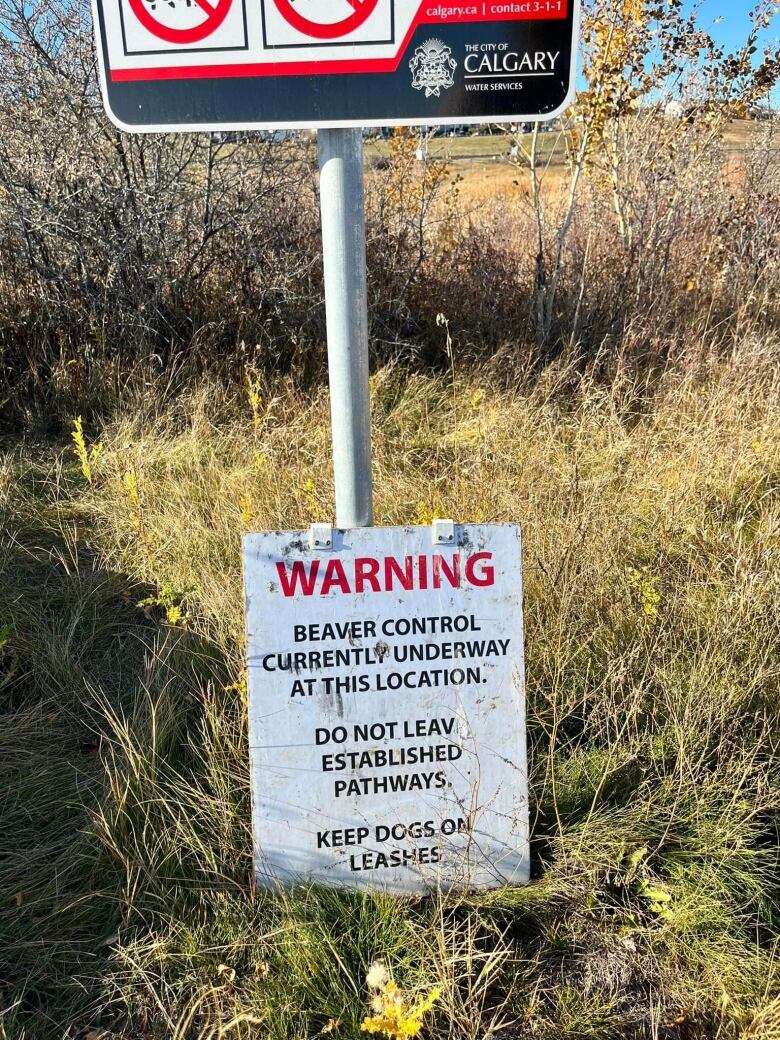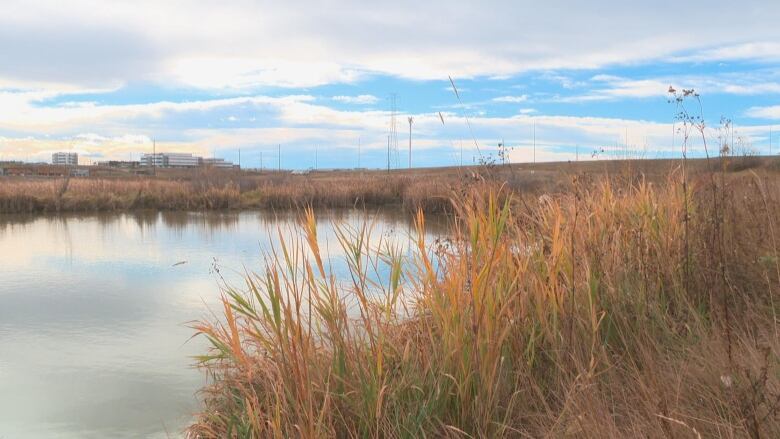City of Calgary trappers kill two beavers, raising questions from conservation groups
Beaver dam threatened infrastructure, city says it ran out of coexistence options

The City of Calgary hired a contractor to set lethal traps in a northeast stormwater pond killing two beavers and removing a dam that was blocking an outlet that controls water levels for the piece of water management infrastructure.
Residents and conservation groups are calling on officials to be more transparent about the practice, and more proactive.
Some suggest the lethal traps could have been avoided and are urging the city to come up with a plan to address future issues between beavers and storm ponds.
"They need to take a serious look at doing this better rather than simply doing it the easy way," said Will Ratliffe with the Friends of Fish Creek Provincial Park Beaver Coexistence Program. "It appears to be typical of how the city doesn't take an ecological focus to managing these ponds."
Through the eyes of a beaver, a stormwater pond isn't any different from the real thing.
The one in question, just off Country Hills Boulevard, west of Coving Road N.E., looks like a park complete with a wooden bridge, garbage cans, and a path meandering around the ponds.
Even people may have a hard time distinguishing the ponds as a piece of municipal infrastructure. Thankfully there are signs from the city's Water Services department warning that any recreational activity in or on the water is prohibited under the Stormwater Bylaw.
But beavers can't read.

Storm ponds are pieces of infrastructure used by the city to collect water when it rains or snows and slowly filter that waterinto rivers, creeks, and streams. The ponds help ensure things like pesticides and road salt don't affect river health and theyprotect communities from flooding.
People in the Coventry Hills area noticed their new neighbours in the spring. Kara Watson, a resident and board member of the Nose Creek Preservation Society, has video of one beaver slapping its tail, a moment her husband captured while out walking the dog.
"We also noticed the water was rising in the storm pond," Watson said.
Not good, according to the City of Calgary, who considered the rising water a flood risk.
Spokesperson Jaime Stopa said trapping beavers is a last resort, and in this case, the city considered all other feasible options.
"In some cases [trapping] is required to protect important public infrastructure," Stopa wrote. "Relocating beavers to other areas is not an option. Alberta Environment and Protected Areas does not support moving beavers."
While the city says these traps are the most humane way to manage beavers, killing them instantly, some disagree.
"Traps set to kill beavers can cause significant suffering; they cannot be guaranteed to kill instantly," read a statement from Aaron Hofman, director of advocacy and policy with the Fur-Bearers, a registered wildlife charity. "Prevention and mitigation measures need to be built into planning and made a priority to successfully coexist with beavers and other wildlife in Calgary, something the city has committed to in the past."
Watson and those on the Nose Creek Preservation Society are looking for answers. The storm ponds are just beside Nose Creek partof a drainage system of ponds and creeks that flows through Airdrie and the city of Calgary, where it eventually joins the Bow River.
"It's an inviting place for beavers," Watson said. "So we'd really like to know what sort of efforts the city is going to make to ensure that we don't have to do this again in the future; kill any beavers."

Coexistence work is well underway in Fish Creek. Will and his wife Rose Ratliffe are leading the Beaver Coexistence program with the Friends of Fish Creek Provincial Park Society.
Over time, they have managed to install a handful of coexistence devices, pond levelers, and culvert exclusion fencing. They are cheap and easy ways to keep beavers on the land, mitigate the damage caused by the animals'dams, and take advantage of their knack for storing water.
Will said they have watched the park's ecosystems thrive as a result, so being able to replicate their model throughout the city could be a helpful tool against drought.
When they look at the Country Hills situation, it's frustrating. While the city says it couldn't find a solution, Rose isn't sure.
The mitigation devices they use have been cheap and effective. They are also commonly deployed across the province.
"You look at all of the communities in the northeast that are under construction, they've all got storm ponds as part of that infrastructure," she said. "If they're not designing those storm pond systems with the recognition that sooner or later a beaver is moving in, they're putting themselves behind the 8-ball to start with."
The city said it is working on recommendationsto cut down on its use of trapping by the end of this year.
So far in 2023, there have been three instances where officials sent out contractors with lethal beaver traps, killing a total of four beavers.












_(720p).jpg)


 OFFICIAL HD MUSIC VIDEO.jpg)
.jpg)



























































































